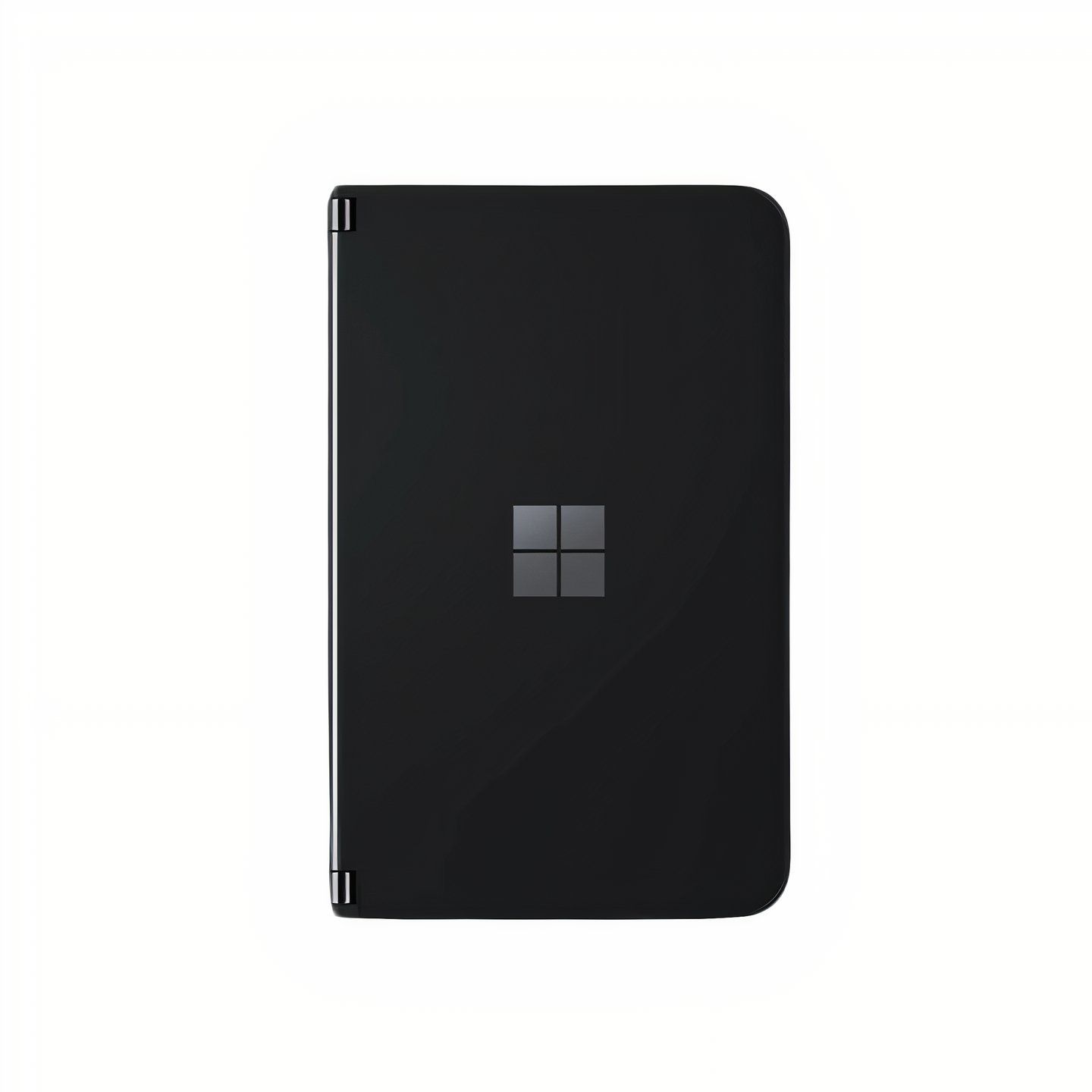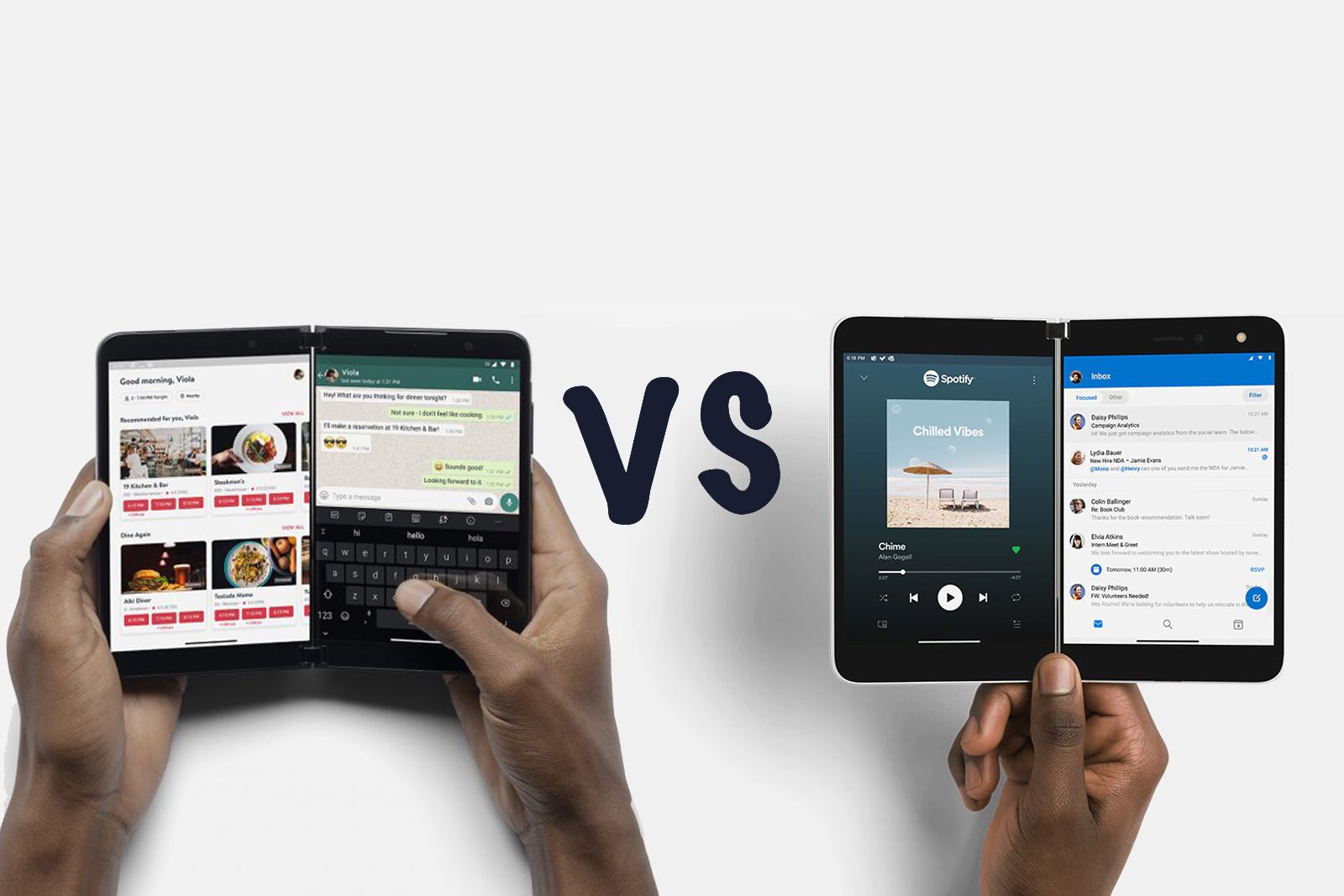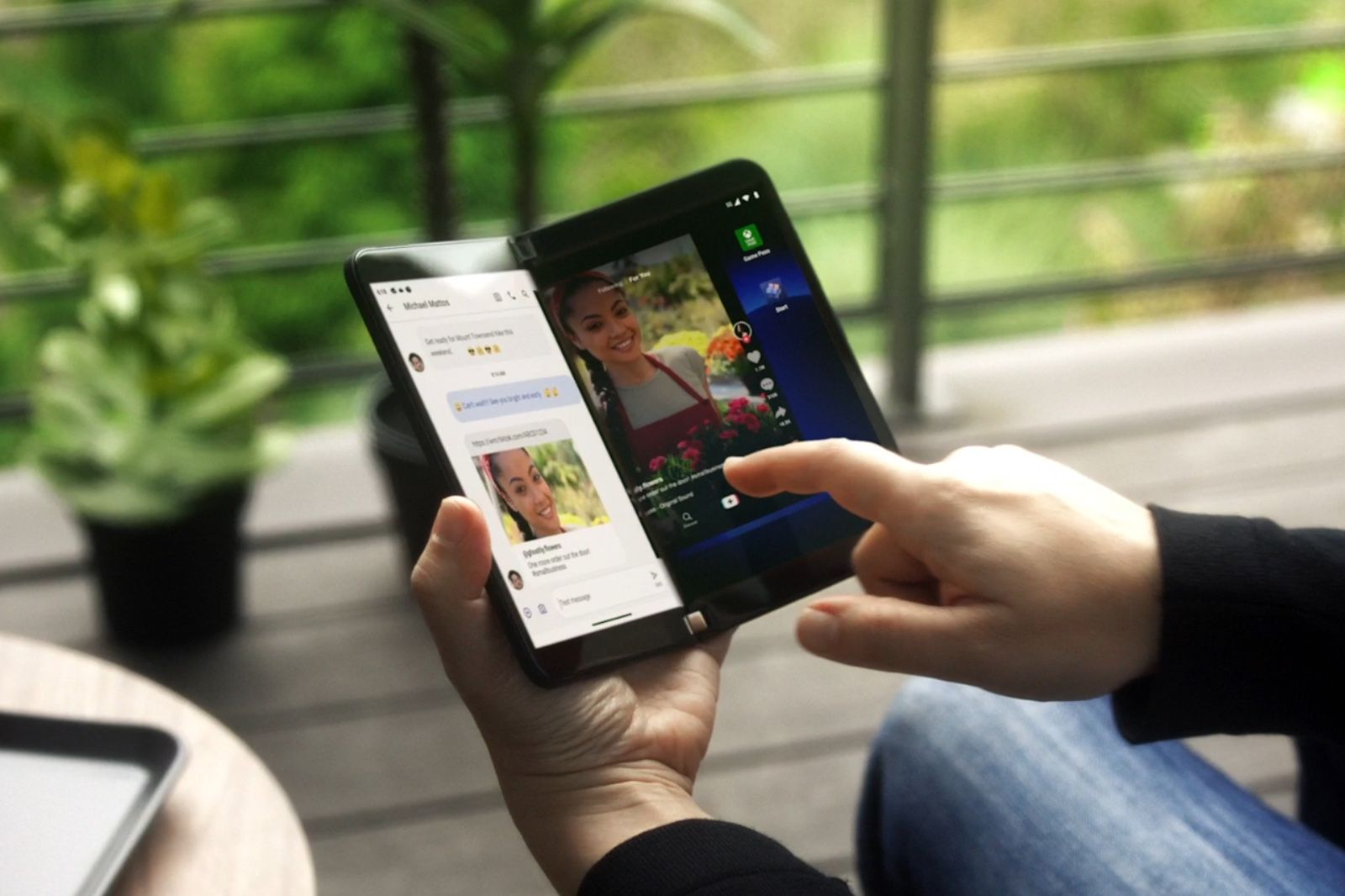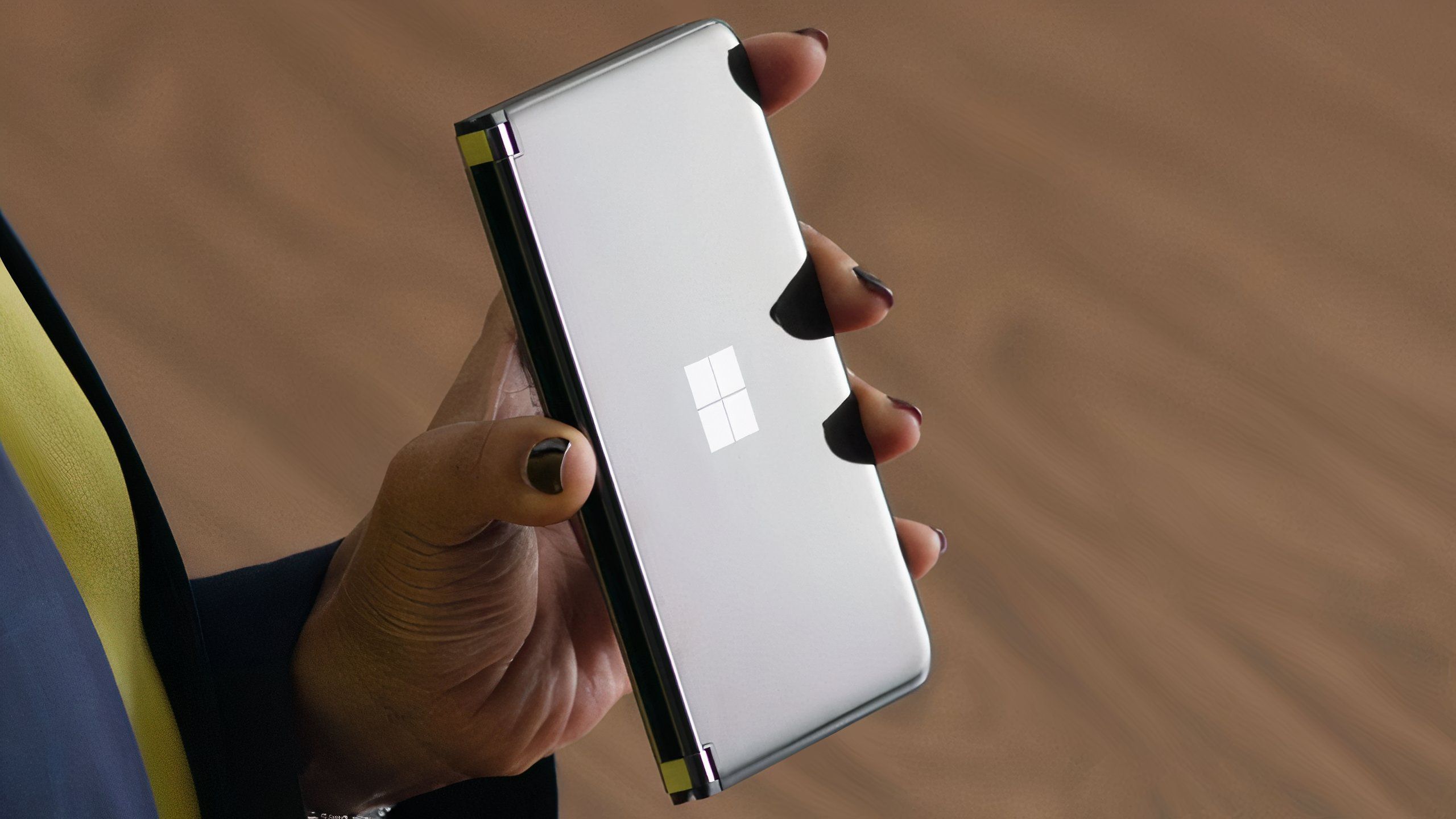Summary
- Microsoft’s foray into the foldable phone market was disappointingly short-lived.
- With its Surface Duo hardware line, Microsoft declared dual screen setups to be superior to their single screen counterparts.
- We might not be getting a Duo 3 anytime soon, but the notion of dual-screen mobile computing continues to entice me in many ways.
When Microsoft’s then-Chief Product Officer Panos Panay took to the stage and unveiled the original Surface Duo in October 2019, I was elated.
For the first time since the release of the original Surface PC hardware in 2012, it felt like Microsoft was on a creative hardware streak. The company was seemingly hungry to innovate, with a bullish desire to orient the smartphone market in a new direction.
The Surface Duo was a unique product — both then and now — with its dual-screen form factor, its use of Google’s competing Android operating system, and its focus on productivity-driven use cases.
Related
Microsoft Surface Duo: All you need to know about the new Surface Phone
The Surface Duo is out in the US and will debut elsewhere from February 2021. Here’s all the latest on the phone-tablet hybrid.
Despite excellent build quality, an attractive physical design language, and razor-thin dimensions, the Surface Duo started life from a rocky vantage point. The era of book-style foldable phones was just kicking off, and both consumers and product reviewers eyed Microsoft’s dual-screen vision with skepticism.
Unlike other foldable smartphones, the Duo (and later, its second-generation successor) featured a large hinge down the middle of its two screens, and lacked an external cover display altogether. In a world where flexible OLED panels, uninterrupted internal real estate, and external displays were becoming the norm, the Surface Duo increasingly came to be seen as a pariah.
To add fuel to the fire, Microsoft botched the initial Surface Duo roll out from a software standpoint — early builds of the company’s bespoke Android skin were unresponsive, bug-ridden, and entirely unrefined, putting a damper on the product line’s launch.
While these early software woes would be largely sorted out, it was too little, too late. Try as Microsoft did to spread the word of dual-screen smartphones and their merits, the tech giant ultimately pulled the plug on its Surface Duo line without ever launching a third-generation product onto store shelves.
-

Surface Duo
Microsoft’s first-generation dual-screen smartphone, which features a foldable design and runs on the Android operating system.
-

Surface Duo 2
Microsoft’s Surface Duo 2 is the company’s second-generation dual-screen smartphone, with larger displays and improved cameras over its predecessor.

Related
Microsoft Surface Duo 2 vs Surface Duo: What’s changed?
Microsoft has a new version of the Duo – so how does it differ from the original?
Microsoft’s decision to ax the Surface Duo line was shortsighted at best
With its dual-screen ambitions made public, the company should’ve held its Surface hardware head up high
Microsoft
Now, the Surface Duo and its younger sibling, the Duo 2, feature prominently in the Microsoft Graveyard of killed-off products and services. The tech giant’s dual-screen smartphone ambitions were unceremoniously laid to rest, despite the previously strong-held conviction that two screens are indeed better than one.
“I think we’ve seen what dual-screen use brings, and we’ve tested thousands and thousands of scenarios with thousands of people. We measure so many different things. We measure the brain activity. We measure how people feel. We ask thousands of questions, and we have an incredible user research team, human factors team, from an inclusive design standpoint, said Panay in a Vergecast interview during the launch window of the original Duo.
Microsoft may have lost faith in multi-screen mobile setups, but I remain a strong believer in the form factor. Intuitively, the compartmentalization of individual tasks within their own distinct spaces makes all the sense in the world. That’s the reason why I (and many others) prefer dual monitor setups over ultra-wide setups — the negative space acts as a demarcation, improving multitasking and reducing cognitive load.
Microsoft may have lost faith in multi-screen mobile setups, but I remain a strong believer in the form factor.
This dual-monitor paradigm of the PC world translates incredibly well over to mobile: individual Android apps are able to ‘do their thing’ irrespective of one another, and without falling into the pitfalls of clunky split screen software solutions. The Duo’s center bezel is a feature and not a bug, and it makes for a productivity environment that runs circles around competing foldable phones currently on the market.
If things had played out differently, and Microsoft had doubled down on its dual-screen Duo ambitions, I firmly believe the company would have carved itself a chunk of the foldable phone market in due time. We’ve seen the likes of Google — a fellow software-first tech titan — use its deep pockets to fund massive advertising campaigns, brute-forcing its Pixel hardware into the public eye.
Microsoft knows that two screens are better than one, and it needs to develop the confidence to blast its revelation both near and far.
Microsoft has a long and storied history within the mobile computing scene, from Windows CE, to Windows Mobile and Windows Phone, and plenty more along the way. If the company wants to reestablish itself in the notoriously cut-throat handset market, it needs to do so by offering a unique product that stands out from the crowd. The solution is clear: Microsoft knows that two screens are better than one, and it needs to develop the confidence to blast its revelation both near and far.

Related
Microsoft Launches Surface Duo 2 – 2nd gen folding productivity machine
Microsoft has updated its Duo smartphone/table device
Trending Products
![cimetech EasyTyping KF10 Wireless Keyboard and Mouse Combo, [Silent Scissor Switch Keys][Labor-Saving Keys]Ultra Slim Wireless Computer Keyboard and Mouse, Easy Setup for PC/Laptop/Mac/Windows – Grey](https://m.media-amazon.com/images/I/415Vb6gl+PL._SS300_.jpg)
cimetech EasyTyping KF10 Wireless Keyboard and Mouse Combo, [Silent Scissor Switch Keys][Labor-Saving Keys]Ultra Slim Wireless Computer Keyboard and Mouse, Easy Setup for PC/Laptop/Mac/Windows – Grey

AOC 22B2HM2 22″ Full HD (1920 x 1080) 100Hz LED Monitor, Adaptive Sync, VGA x1, HDMI x1, Flicker-Free, Low Blue Light, HDR Ready, VESA, Tilt Adjust, Earphone Out, Eco-Friendly

TopMate Wireless Keyboard and Mouse Ultra Slim Combo, 2.4G Silent Compact USB Mouse and Scissor Switch Keyboard Set with Cover, 2 AA and 2 AAA Batteries, for PC/Laptop/Windows/Mac – White

HP 2024 Laptop | 15.6″ FHD (1920×1080) Display | Core i3-1215U 6-Core Processor | 32GB RAM, 1.5TB SSD(1TB PCIe & P500 500GB External SSD) | Fingerprint Reader | Windows 11 Pro

Thermaltake View 200 TG ARGB Motherboard Sync ATX Tempered Glass Mid Tower Computer Case with 3x120mm Front ARGB Fan, CA-1X3-00M1WN-00

SAMSUNG FT45 Sequence 24-Inch FHD 1080p Laptop Monitor, 75Hz, IPS Panel, HDMI, DisplayPort, USB Hub, Peak Adjustable Stand, 3 Yr WRNTY (LF24T454FQNXGO),Black

Dell Inspiron 15 3520 15.6″ FHD Laptop, 16GB RAM,1TB SSD, Intel Core i3-1215U Processor(Beat i5-1135G7), SD Card Reader, WiFi, Bluetooth, Webcam, Win 11 Home, Alpacatec Accessories, Carbon Black
![Dell Inspiron 15 3000 3520 Business Laptop Computer[Windows 11 Pro], 15.6” FHD Touchscreen, 11th Gen Intel Quad-Core i5-1135G7, 16GB RAM, 1TB PCIe SSD, Numeric Keypad, Wi-Fi, Webcam, HDMI, Black](https://m.media-amazon.com/images/I/51O3nNfyJPL._SS300_.jpg)







